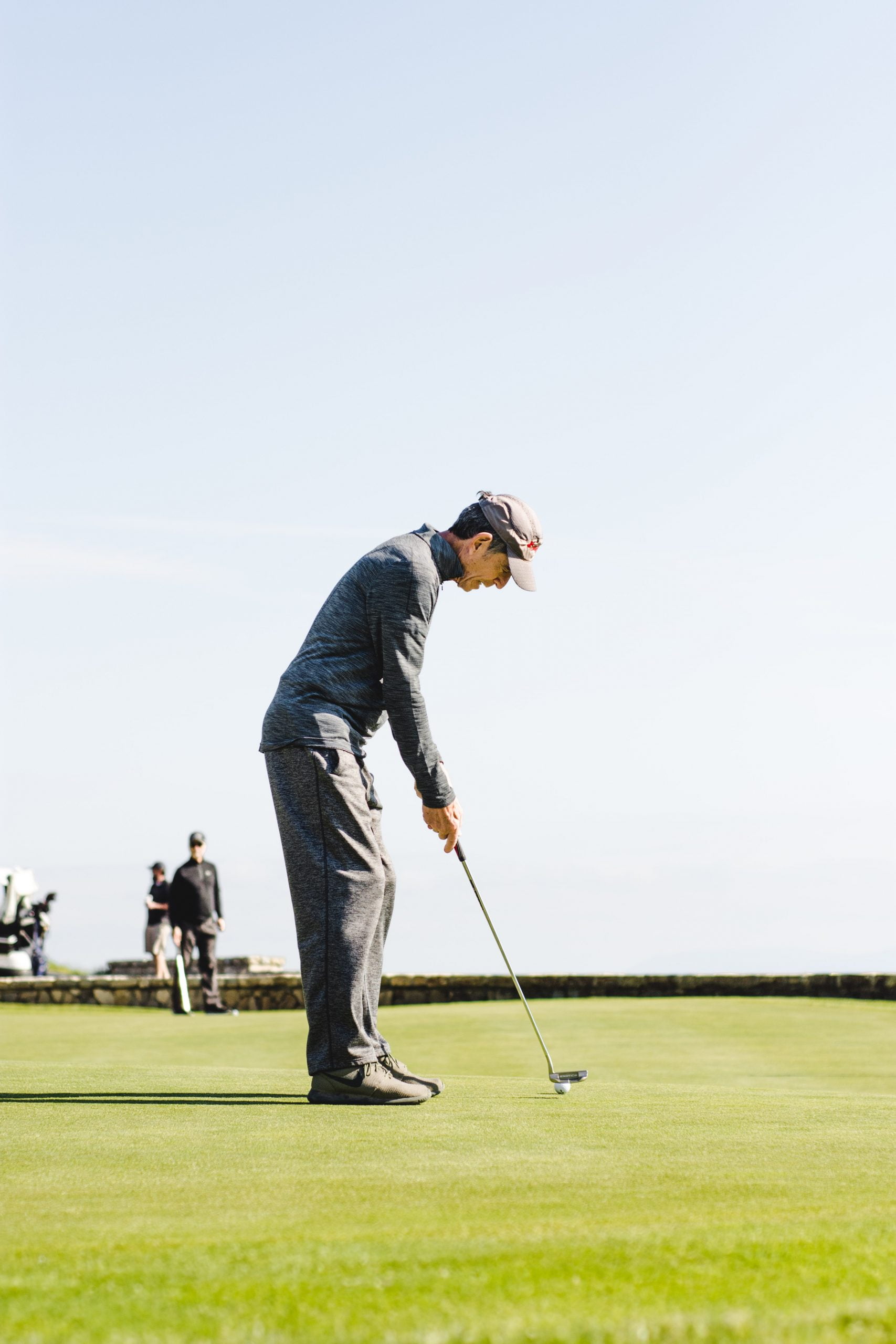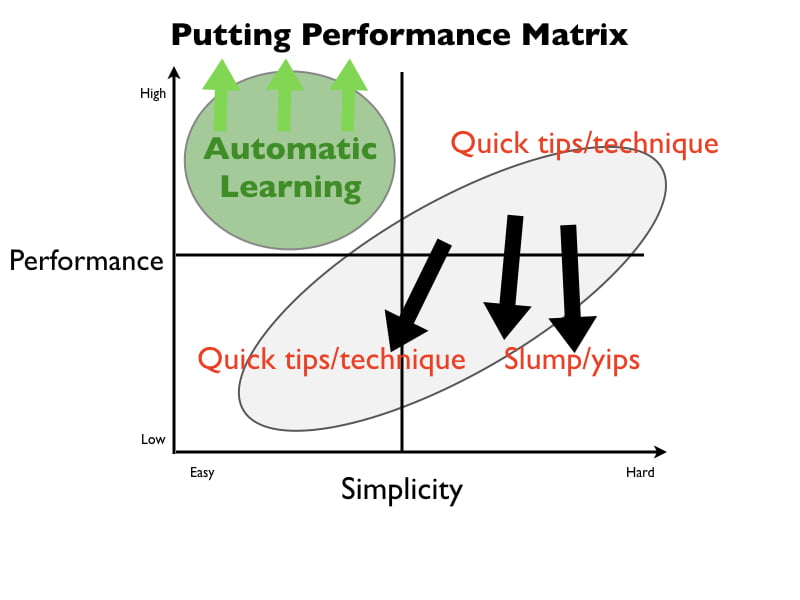The Learning Matrix
Take your time to study this image. It’s important.
For many, the tips, the theories and all the instruction DON’T provide the path to the best results. And the “normal” way is hard work because you need to constantly find new things to come up with.
And because it’s hard you can’t sustain high levels of performance. This is why you can putt well one week, and like a madman the next (things can even change hole to hole).
And if you keep bombarding your system with too many rules/regulations/theories then you may start getting the yips and ultra-poor performance.
This is when you find golf really hard and you don’t get any sort of decent performance. You are fighting the system and it’s NOT much fun.
But let’s flip the lid on all this instruction
Many years ago I asked the question, “Is there an easier way?”.
Automatic Learning (as I like to call it) was the answer. I looked at how we approach other skills (like throwing or driving a car) and realised us crazy golfers had totally complicated the simple art of putting the ball.
With Automatic Learning you get the best of both worlds. You get higher levels of performance with the least amount of effort.
And it gets better. Because you’re learning optimally (like how you’re meant to) your results can keep on getting better and better. It really is the ultimate win-win situation and you don’t need a university degree to get results.
So you really have a choice. If you can’t make traditional teaching concepts work for you, then by all means you can keep going down the technical rabbit hole.
Or,
You can embrace your learning system and trust yourself that you can roll that potato along the ground towards the hole.
The major learning conflict
The very foundation of accepted golf instruction doesn’t work (There! I said it)
The current system really has set you up for failure. And this is quite ironic, but the very thing you’re doing to fix your putting is the thing causing you all the misery.
Let me say that again so it’s really clear.
All the theories, tips and quick fixes are causing you to fail. It has nothing to do with you. You are more than talented enough to roll the ball along the grass.
So it’s not you fault. It’s also not a time for band-aid solutions. The last thing you really need is another tip out of Golf Digest (don’t get me started)
Now is the time to reconsider the way you approach your putting game.



